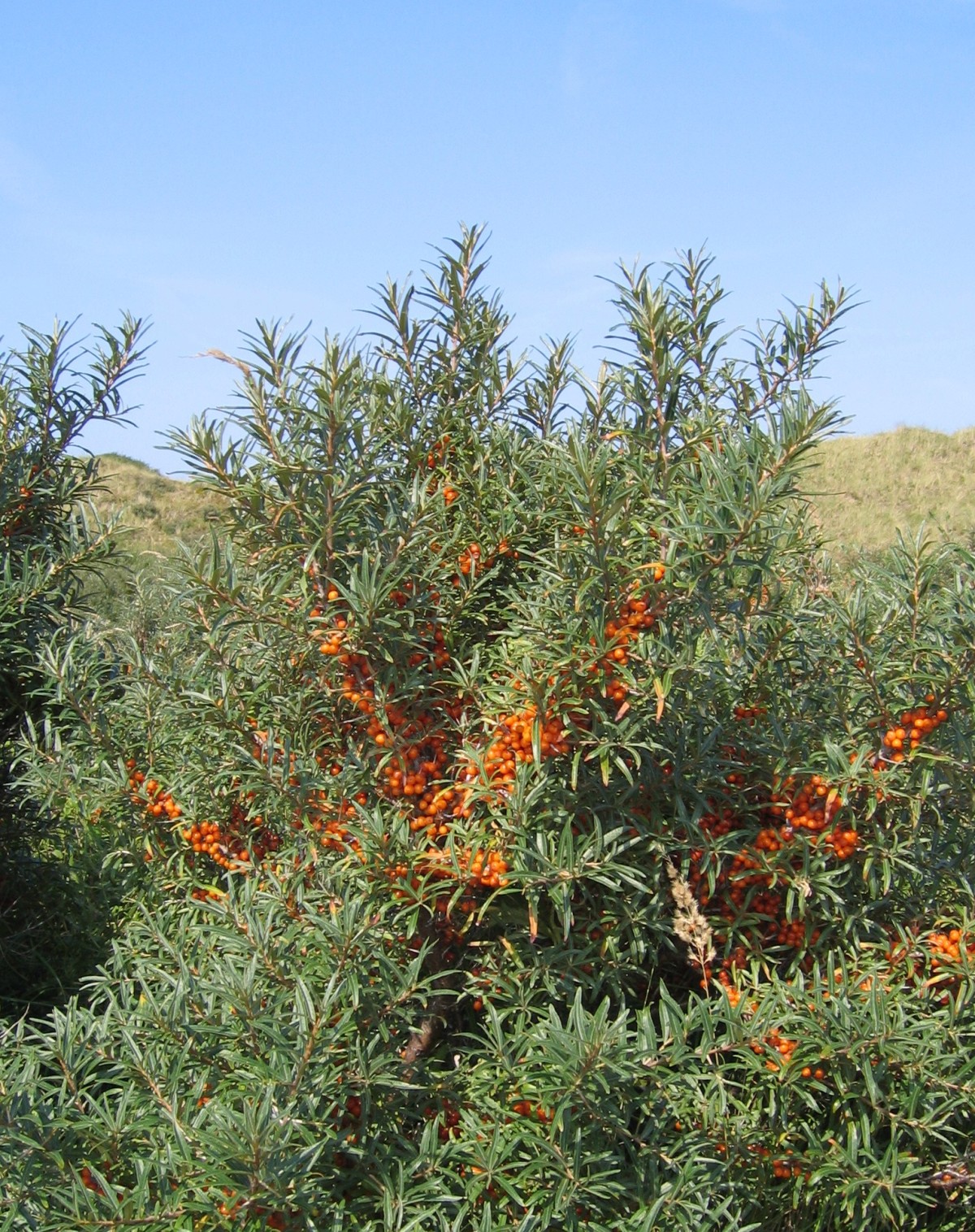Hippophae rhamnoides
Sea buckthorn
Species Tolerances
- Drought Tolerance: High
- Shade Tolerance: No
- Waterlogging Tolerance: Low
- Frost Tolerance (trees from warmer climates may be frost tolerant, but their flowers may not be): Yes
- RHS Hardiness: H7
- Optimum Conditions for Growth:
A small tree or shrub that grows best in maritime or any free-draining sandy soil, pH neutral to alkaline. Tolerant of coastal gales. Cannot tolerate shade. - Susceptibility to Pest/Disease:
No pest or disease problems at present

Hippophae rhamnoides/ Svdmolen/ https://creativecommons.org/licenses/by-sa/3.0/deed.en
Service to Pollinators
- Summary of Service to Pollinators:
Wind pollinated so no nectar, only pollen produced by male trees which ladybird beetles observed feeding on. - Nectar Value to Pollinators: 0 (of 0-3)
- Honeydew Value to Pollinators: 0 (of 0-3)
- Pollen Value to Bees: 0 (of 0-3)
- Flowering Period: April-May
Risks
- Human Toxicity: Non-toxic
- Livestock Toxicity: Non-toxic
- Invasive Risk: Yes
- Suckering: Yes
Products
- Edible Fruit: Yes
- Edible Leaves: Yes
- Edible Sap: Insufficient Data
- Edible Seeds: Insufficient Data
- Honey, major source in UK: No
- For any medicinal potential, see 'Further Details' below.
- Timber: No
- Livestock Fodder: No
- Other Products:
High value oil from the bright orange fruit, mainly for its omega oils and exceptionally high vitamin C content, popular in health food use and cosmetics.
Utility
- Nitrogen Fixation: Yes
- Organic Matter Accumulation: Yes
- Phytoremediation: Insufficient Data
- Deacidification: Insufficient Data
- Windbreak: Yes
- Soil Erosion Control: Yes
- Shade or Shelter: No
- Plant Support: Insufficient Data
- Integrated Pest Management: Insufficient Data
- Wildlife Value: Yes
- Wildlife Value Summary:
Good biodiversity and berries on female plants for food for a large range of birds and mammals. Thorny protection. - Graduated Nativeness Classification ⓘ: 1 (of 1-10)1. Historic Native
2. Historic Introduction
9. Neutral Introduction
Further Details
Medicinal and cosmetics potential. The species is potentially invasive in sandy, maritime areas because of its extreme suckering habit, this being its main mode of propagation, since the female trees rely on male trees being close by for pollination. Pioneer species which dies out quickly when overshadowed by other trees. The only native Eleagnacea, and able to fix nitrogen in the soil. Used extensively as soil erosion control due to its extensive suckering habit.